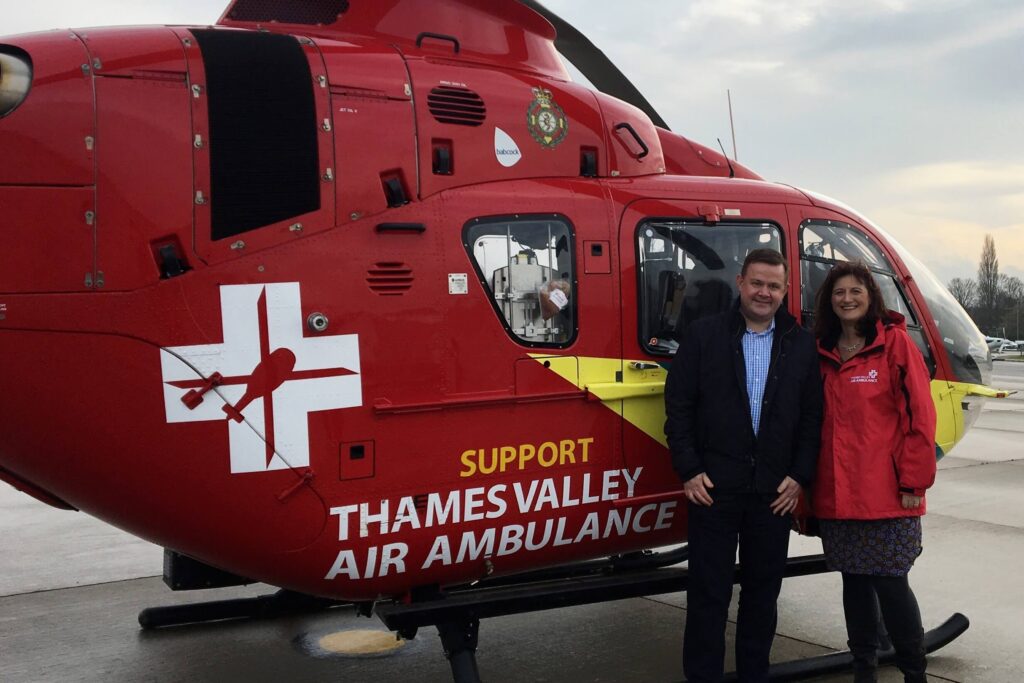AeroTime CEO, Richard Stephenson, spoke to Amanda McLean, Chief Executive of Thames Valley Air Ambulance, about running a life-saving charity during the pandemic.
When you speak to Amanda McLean, you hear the passion and determination that has led her to build the Thames Valley Air Ambulance into one of the most successful services in the UK. During her four-year tenure, as she has grown the service and taken the organisation through the process to become a registered ‘independent healthcare organisation’, she has constantly reminded everyone that there are people at the end of every journey taken and every decision made – and usually these are people in dire life-threatening situations.
Medical and aviation are two of the most highly regulated sectors you could find. And quite rightly so. When Covid struck and the health systems around the world faced their biggest challenge in history, Thames Valley Air Ambulance wanted to play its part.
“When it comes to running our operations during a pandemic, it was always going to be complicated” says McLean. “Making sure we have the right PPE, trying to continue with our hugely important fundraising efforts, liaising with Babcock, our helicopter partners, and just making sure we have enough personnel to operate our cars and aircraft was always going to be difficult, but I am so incredibly proud of the team for constantly going to extra mile to keep our operations running smoothly.”
As a director of the UK CAA, I once had the opportunity to visit RAF Benson in Oxfordshire, where Thames Valley Air Ambulance is based. It’s an impressive operation and watching the helicopter take-off to speed towards an emergency situation was quite a moment. It’s the kind of thing you would have thought you would get used to, but not in McLean’s case.
Richard Stephenson and Amanda McLean
“I feel the same amount of hope and pride every time I see the helicopter take off. Within 15 minutes, and most of the time a lot sooner, that specialist team of highly trained medical personnel will be fighting to save someone’s life, or will be helping people in a traumatic situation. Our job is to provide critical care when the worst happens and it’s something we all take very seriously” says McLean.
For patients in critical conditions, the victims of a road traffic collision or someone suffering from a heart attack or cardiac arrest, getting the expertise of the crew, with their specialist equipment and drugs, to the patient as quickly as possible is vital. That’s where the helicopter saves precious minutes. But during the Covid months, the Thames Valley helicopter, and many others like it, have not been able to transport patients to hospital by air so its clinicians accompany the patient in a land ambulance instead – they are still saving lives.
“What we do is only possible because of our dedicated team and our fundraisers. There is no doubt that some of our fundraising opportunities have dried up during the pandemic but that hasn’t stopped people trying everything they can to raise money to keep our operations going. Including possibly our most amazing fundraiser, 104 year old Ruth Saunders who was even recognised by the Queen in the New Year Honours for her efforts – something which delighted all of us and was richly deserved. This was a real highlight in a very challenging year.”
When you bring medical and aviation together, it’s a pretty complicated universe. And when you add a global pandemic on top of that, it’s a daily battle. More people needing help, but it’s more difficult to operate, especially when the helicopter is restricted in what it can do. It’s hard to imagine anything more frustrating than knowing you have a lifesaving vehicle that can’t be used to full capacity. But that is what this and other air ambulance services have faced in the last year.
